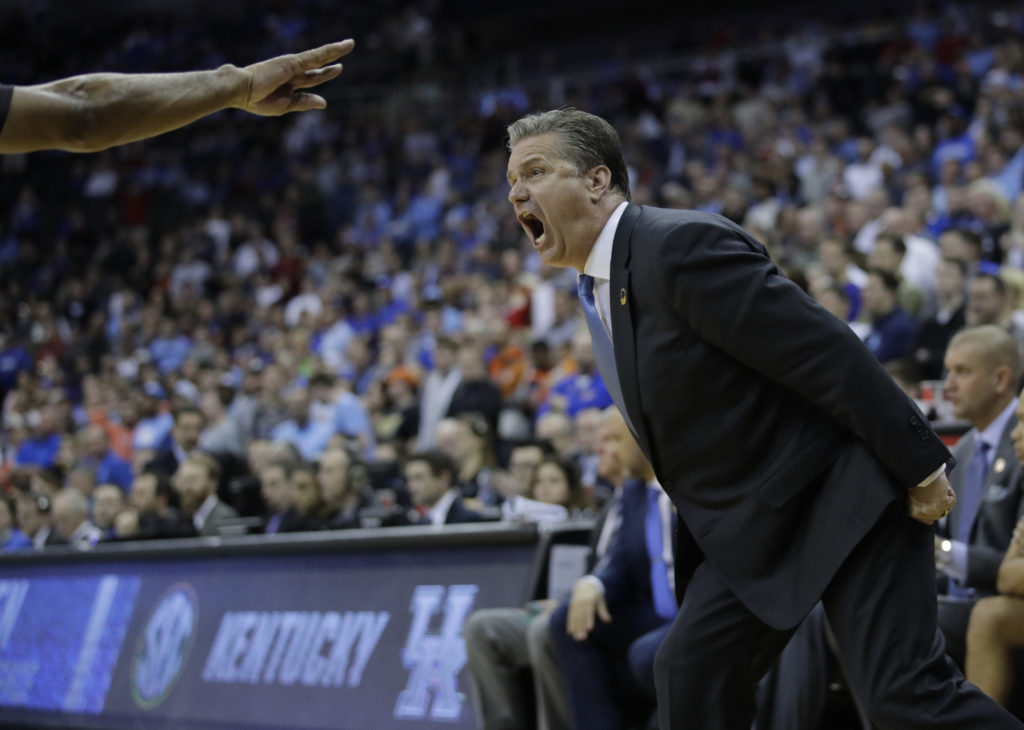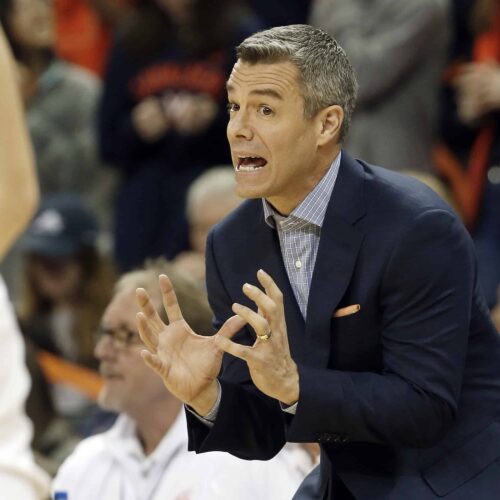Introduction
When March Madness wraps up late Monday night, the attention will be focused on the stars of the night and their exploits on the hardwood in Minneapolis. But when Republicans in Congress sat down to write the 2017 Tax Cuts and Jobs Act, they wrote a provision that focused on a different aspect of college hoops — the sky-high incomes of the game’s most prominent coaches.
With the pay of many college officials and coaches running into the millions of dollars, their salaries were an easy target for a Congress struggling to find revenue to pay for its huge bundle of tax cuts. So, Congress decided to tax them. Or, at least, some of them. And therein lies an ‘only in Washington’ tale.
It was all part of a larger plan to tax nonprofits, which for decades had avoided the taxes that were levied on businesses. When the massive tax bill was signed by President Donald Trump in December 2017, Congress slapped a 1.4 percent tax on the schools with the largest endowments; a tax on fringe benefits offered by nonprofits, including churches; and a 21 percent tax on the portion of salaries over $1 million paid to the five highest-paid employees of nonprofits, including universities. Lawmakers said they were trying to put nonprofits on a par with for-profit organizations, which they punished by taking away certain tax deductions for executives who are paid over $1 million.
But it turns out these tax tweaks contained some surprises – at least for many members of Congress. First, the highest paid university employees are mostly football and basketball coaches, not administrators. Duke University’s basketball coach Mike Krzyzewski, who took his team to the NCAA’s Elite Eight this spring, was paid more than $7 million by the school in 2016 according to the most recently available data compiled by USA Today, which tracks coaches’ pay. On top of that, IRS records show that three of Duke’s five highest paid employees are coaches. According to data from the Chronicle of Higher Education, the highest-paid public employees of all 50 states work at universities, and in 39 states they are coaches.

The coaches who made the final four are being paid the following this year by their universities: Tom Izzo, Michigan State University, $3.7 million; Tony Bennett, the University of Virginia, nearly $3.2 million; Chris Beard, Texas Tech University, $2.8 million; Bruce Pearl, Auburn University, $2.6 million. John Calipari, whose Kentucky team also made the Elite Eight, earned compensation of nearly $8 million in 2018-2019. And many coaches earn hundreds of thousands of dollars more from other outside sources. Football coaches are paid even better: 13 football coaches were paid at least $5 million in the 2018 season, according to USA Today.
Surprise number two: Duke — a private university and perennial basketball power — will probably have to pay that 21 percent tax, while Texas Tech — a public school — will not. (Duke declined to comment.) The drafters of the tax provision thought that another arcane section of the tax code would scoop up public universities, which generally are not taxed by the federal government, and make them pay the tax, too. But experts quickly agreed the provision would not have that effect. Ellen P. Aprill, who holds the John E. Anderson Chair in Tax Law at the Loyola Law School in Los Angeles, called the drafters’ understanding of the tax code provision a “misreading.”
“This mistake is a serious one with far-ranging consequences,” Aprill said.
The reason, as Paul Streckfus, who edits and publishes a journal that focuses on tax-exempt organizations, told Politico, is that “it could be quite unfair. If you’re a private university paying your coach $5 million versus a public university also paying their coach $5 million – there’s quite a difference in the tax impact” —because the public school in most cases would not have to pay the tax.
However, like almost everything related to taxation, things are not quite that simple. Aprill, who specializes in studying this part of the law, says that any public university that has convinced the IRS to certify it as a charity — through what is known as a 501(c)(3) determination letter — is subject to the tax. Some public schools seek such a designation because it aids their fundraising efforts. Some, such as the University of Michigan, Ohio State, and the University of Virginia, have been designated a 501(c)(3, according to Aprill, which means they will likely have to pay the tax. A Virgnina spokesman said his university will pay the tax. But others—including Michigan State, Auburn, and Texas Tech, who are all in the Final Four with Virginia — have not, and it seems they will get to avoid the tax.
Other questions swirl around what is going to be taxed, because many coaches receive other compensation outside what the university pays them. Extra pay can come from contractual arrangements with TV networks, sneaker companies, or even the school’s own fundraising foundations. Calipari received more than $1.3 million in compensation on top of the $7.95 million Kentucky pays him, plus a $50,000 bonus in 2017-2018, according to the USA Today compilation. “It’s very complicated,” said Aprill.
The only good news here may be for the coaches. The IRS assesses the 21 percent tax on universities, not the individuals being paid the big money.

University athletic departments are also unhappy that the new tax law closed the loophole that allowed fans to take tax deductions when they gave to athletic departments for the right to buy season tickets. In the past, donors could take an 80 percent deduction on all athletics gifts. Now they cannot if the gift is tied to season-ticket purchases. The change was estimated to raise $2 billion for the Treasury, part of a large collection of taxes and canceled deductions that helped bring the cost of the tax law down — to just $1.5 trillion.
While the consequences of the taxes have not yet been fully realized, there is consensus among sports economists that the results will mean fewer donations to university and college athletic departments, and that the sports that may get hurt the most will be the so-called Olympic sports —the ones not played on a national stage.
Other Tax Act Glitches
Some experts think the tax bill also overreached with its 1.4 percent tax on the investment income of private nonprofit colleges and universities. The tax, on schools with endowments of more than $500,000 per student, is expected to raise $1.8 billion in tax revenue.
The endowment of Princeton University, for example, was $25.9 billion in 2018; an article in the school’s alumni weekly said the tax will cost the university “tens of millions of dollars.”
The new tax apparently was designed to put university endowments on a par with private family foundations, which pay a 2 percent excise tax based on their investment income. But 49 university presidents signed a letter on March 7, 2018, complaining that their endowment money was not just sitting in the bank, but was actively funding operations, professor salaries, and student scholarships. “For many [colleges],” the letter said, “endowments provide almost half of annual revenues.”
The new taxes on endowments, high salaries, and the elimination of the game-ticket loophole were all intentional. But who would have thought that the GOP would be taxing churches?
Again, it was all part of the plan to find new revenue. For years, businesses had been taking tax deductions for fringe benefits to their employees. If they took those away, lawmakers calculated, they could raise $41.2 billion. But since nonprofits don’t pay taxes, members of Congress couldn’t take away their tax deductions. So instead they levied a 21 percent tax on the fringe benefits that nonprofits hand out — things like free parking spaces, meals, and exercise rooms. Churches, fitting into the nonprofit category, were included.
Religious institutions protested. The Jewish Federations of North America said the provision will cost its members $75,000 a year, and the UJA-Federation of New York said it would cost it $90,000, according to The New York Jewish Week. “For our agencies, the costs are estimated at several million dollars in new federal taxes,” a spokeswoman for UJA-Federation said.
On Nov. 13, 2018, 33 religious leaders — Baptist, Jewish, Muslim, Catholic, Mormon and more — sent a letter to congressional leaders pointing out that the law would extract $1.7 billion from houses of worship and charities over 10 years, a “massive diversion of funds from civil society to the government.” They called for immediate repeal, and some congressmen came to their support.
“Requiring these organizations to pay a federal tax on these employee benefits, something they have never been required to do before, will cause them to not only face an increased operating cost, but also an administrative burden,” wrote Sens. James Lankford, R-Okla., and Chris Coons, D-Del., in a Nov. 27, 2018, letter to Treasury Secretary Steven Mnuchin.
They asked Mnuchin for a one-year delay in taxing the churches so Congress could fix the problem. Mnuchin did not do that, but the IRS did issue guidance on parking: If churches remove their employee parking signs and if half of their lots were available to non-employees, they would not have to pay the tax. The other taxes remained in effect.
Republicans tried to correct the mistake, and the one that exempted many public universities from paying the excess compensation tax, in a 297-page bill they drafted in November, but Democrats refused to support it. The bill went nowhere. So, educational and religious institutions are left trying to figure out how to interpret the new law, or how to pay their new tax bills.



Join the conversation
Show Comments